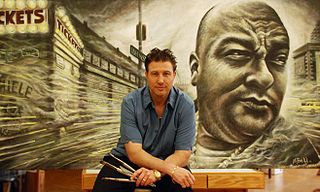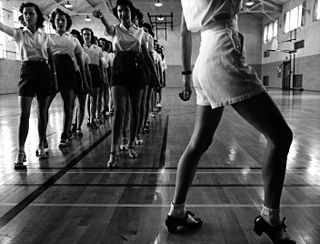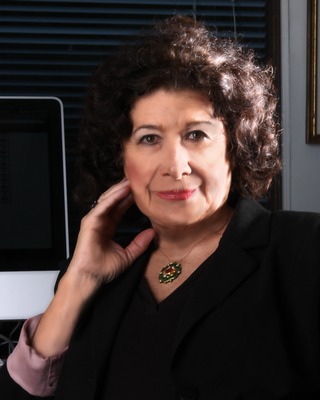Related Research Articles
The National Council of Teachers of English (NCTE) is a United States professional organization dedicated to "improving the teaching and learning of English and the language arts at all levels of education. Since 1911, NCTE has provided a forum for the profession, an array of opportunities for teachers to continue their professional growth throughout their careers, and a framework for cooperation to deal with issues that affect the teaching of English." In addition, the NCTE describes its mission as follows:
The Council promotes the development of literacy, the use of language to construct personal and public worlds and to achieve full participation in society, through the learning and teaching of English and the related arts and sciences of language.

Music education is a field of practice in which educators are trained for careers as elementary or secondary music teachers, school or music conservatory ensemble directors. Music education is also a research area in which scholars do original research on ways of teaching and learning music. Music education scholars publish their findings in peer-reviewed journals, and teach undergraduate and graduate education students at university education or music schools, who are training to become music teachers.

Visual arts education is the area of learning that is based upon the kind of art that one can see, visual arts—drawing, painting, sculpture, printmaking, and design in jewelry, pottery, weaving, fabrics, etc. and design applied to more practical fields such as commercial graphics and home furnishings. Contemporary topics include photography, video, film, design, and computer art. Art education may focus on students creating art, on learning to criticize or appreciate art, or some combination of the two.
Cultural competence, also known as intercultural competence, is a range of cognitive, affective, and behavioural, linguistic, skills that lead to effective and appropriate communication with people of other cultures. Intercultural or cross-cultural education are terms used for the training to achieve cultural competence.
The Society for Photographic Education (SPE) is a nonprofit membership organization that provides a forum for the discussion of photography and related media as a means of creative expression and cultural insight. Through its interdisciplinary programs, services and publications, the society seeks to promote a broader understanding of the medium in all its forms, and to foster the development of its practice, teaching, scholarship and criticism.
Multicultural education is a set of educational strategies developed to provide students with knowledge about the histories, cultures, and contributions of diverse groups. It draws on insights from multiple fields, including ethnic studies and women studies, and reinterprets content from related academic disciplines. It is a way of teaching that promotes the principles of inclusion, diversity, democracy, skill acquisition, inquiry, critical thought, multiple perspectives, and self-reflection. One study found these strategies to be effective in promoting educational achievements among immigrant students.

Museum education is a specialized field devoted to developing and strengthening the education role of informal education spaces and institutions such as museums.

Michael Bell is an American portrait painter, muralist, screenwriter and author. He has painted portraits of John Gotti and actors from Mafia dramas The Sopranos, Goodfellas and A Bronx Tale. Bell is an anti-bullying and Autism activist. In June, 2017 Bell published his memoir "Dual Lives: from the Streets to the Studio".

The National Art Education Association (NAEA) is a non-profit professional association founded in 1947 in the United States, headquartered in Alexandria, Virginia. It is the world's largest professional art education association.

Dance education is a practice whereby students are taught a broad understanding of dance as an art form or trained professionally in specific dance genres. Dance education also encompasses a research area in which scholars conduct original research on ways of teaching and learning dance. Currently, dance itself is considered an allied form of art and music, thus dance in formal education is closely knit with these disciplines.
Graeme Sullivan is an Australian artist, author, art theorist, and educator. He has contributed work to numerous exhibitions and events and is known for his international "Streetworks" project that plants public art in unusual urban locales. He authored the books Art Practice as Research (2005) and Seeing Australia: Views of Artists and Artwriters (1994). He has served as an editorial board member and consultant to the International Journal of Art & Design Education, the International Journal of Education and the Arts, and Studies in Material Thinking. Sullivan, who graduated from Ohio State University in 1984 with both a Master of Arts and a PhD, has taught art at the University of New South Wales's College of Fine Arts, and the Teacher's College at Columbia University. He is the current director of the School of Visual Arts at Pennsylvania State University.

Jere T. Humphreys is an American music scholar who applies historical, quantitative, philosophical, and sociological research methods to music education and arts business.
David G. Hebert is a musicologist and comparative educationist, employed as Professor of Music at Western Norway University of Applied Sciences, where he leads the Grieg Academy Music Education (GAME) research group. He has contributed to the fields of music education, ethnomusicology, sociomusicology, comparative education, and East Asian Studies. Since 2018, he has been manager of the Nordic Network for Music Education, a multinational state-funded organization that sponsors intensive Master courses and exchange of university music lecturers and students across Northern Europe. He is also a visiting professor in Sweden with the Malmo Academy of Music at Lund University, and an honorary professor with the Education University of Hong Kong. He has previously been sponsored by East Asian governments as a visiting research scholar with Nichibunken in Kyoto, Japan, and the Central Conservatory of Music, in Beijing, China.

Zafra M. Lerman is an American chemist, educator, and humanitarian. She is the President of the Malta Conferences Foundation, which aims to promote peace by bringing together scientists from otherwise hostile countries to discuss science and foster international scientific and technical collaboration. From 1986 to 2010, she chaired the American Chemical Society's Subcommittee on Scientific Freedom and Human Rights. She has been successful in preventing executions, releasing prisoners of conscience from jail and bringing dissidents to freedom. She is the recipient of many awards for education and science diplomacy, including the 1999 Presidential Award from U.S. President Clinton, the 2005 Nyholm Prize for Education from the Royal Society of Chemistry (England), the 2015 Science Diplomacy Award from the American Association for the Advancement of Science (AAAS), the 2016 Andrei Sakharov Award for human rights from the American Physical Society (APS), the 2016 United Nations NOVUS Award for the 16th Sustainable Development Goal: Peace and Justice, and the 2017 International Union of Pure and Applied Chemistry Distinguished Women in Chemistry or Chemical Engineering Award.
Patricia Shehan Campbell is an American musicologist.

Ratna Ghosh is a Canadian academic and education scholar. She is a Distinguished James McGill Professor and Sir William C. Macdonald Professor of Education at McGill University in Montreal, Canada, where she previously served as the Dean of the Faculty of Education from 1998 – 2003.
Patricia A. Edwards, a member of the Reading Hall of Fame, is a Distinguished Professor of Language and Literacy in the Department of Teacher Education and a Senior University Outreach Fellow at Michigan State University. She is a nationally and internationally recognized expert in parent involvement, home-school-community partnerships, and multicultural, early, and family/intergenerational literacy with a focus on poor and minority children. She served on the International Literacy Association Board of Directors from 1998–2001, as the first African American President of the Literacy Research Association from 2006–2007, and as President of the International Literacy Association from 2010–2011. Edwards also served as a member of the Board of Directors for the American Educational Research Association's (AERA) Family, School, and Community Partnerships Special Interest Group (SIG) from 2014–2016 and was elected to serve as its President-Elect/President from 2016–2020.
Kerry Freedman is a Professor of Art and Design Education at Northern Illinois University and Coordinator of Doctoral Programs in the College of Visual and Performing Arts. She is also a past Head of the Art + Design Education Division. Professor Freedman's research focuses on questions concerning the relationship of curriculum to art, culture, and technology. Recently, she has particularly focused on inquiries into student learning through engagement with visual culture. She has provided significant leadership to the field through her various service roles and publications. Freedman's service roles include, but are not limited to: Senior Editor of Studies in Art Education, the research journal of the National Art Education Association, and World Councilor of the International Society for Education through Art, a UNESCO affiliate. She was the co-Chair of the Art Education Research Institute.
Karen Keifer-Boyd is an American art educator. She has written and co-written several articles and books in the field of art education, focusing on feminist pedagogy, inclusion, disability justice, transdisciplinary creativity, transcultural dialogue, and social justice arts-based research. So co-founded, with Deborah Smith-Shank, the art education journal Visual Culture and Gender. She has received many awards for leadership and teaching.
National Art Education Association Women's Caucus is an interest group of the professional art education organization, the National Art Education Association.
References
- ↑ DeJong, M. (Ed.) (1985). USSEA Handbook and Operations Manual. Cincinnati, OH: United States Society for Education through Art. Page 1.
- 1 2 Manifold, M. C., Zimmerman, E. (Eds) (2008). USSEA Handbook and Operations Manual. 5th edition Cincinnati, OH: United States Society for Education through Art. Page 2
- ↑ Steers, J. (2001). InSEA: A Brief History and a Vision of its Future Role. International Journal of Art & Design Education 20 (2), 215-229.>, additional text. (Hoggart quoted in Steers, 2001, p. 216)
- ↑ De Jong, M. F. (1985). USSEA Handbook: Historical Record. Cincinnati, OH: United States Society for Education through Art.
- ↑ LaPierre, S. D., Stokrocki, M., & Zimmerman, E. (2000). "Research methods and methodologies for multicultural and cross-cultural issues in art education." Crossing Cultural, Artists, and Cyber Borders: Issues and Examples in Art Education Conference, (Tempe, Arizona, January 7–8, 2000). Boulder, CO: United States Society for Education through Art, additional text.
- ↑ Manifold, M. C. (Ed.) (2009). USSEA handbook: Historical record, 5th edition. Bloomington, IN: United States Society for Education through Art. Page 11
- ↑ USSEA. (2007). The Edwin Ziegfeld Awards. Arts & Activities, 142 (2). 6.
- ↑ "Journal of Cultural Studies in Art Education". Official site. USSEA. Retrieved 2010-05-25.